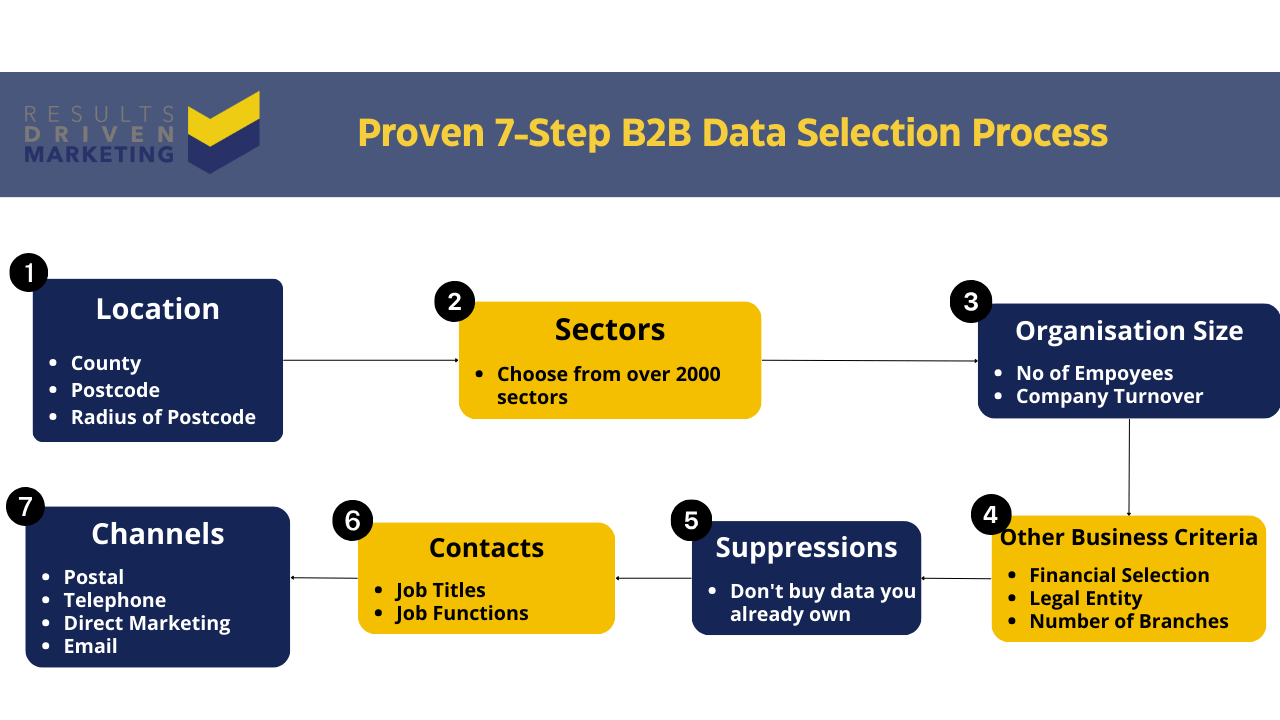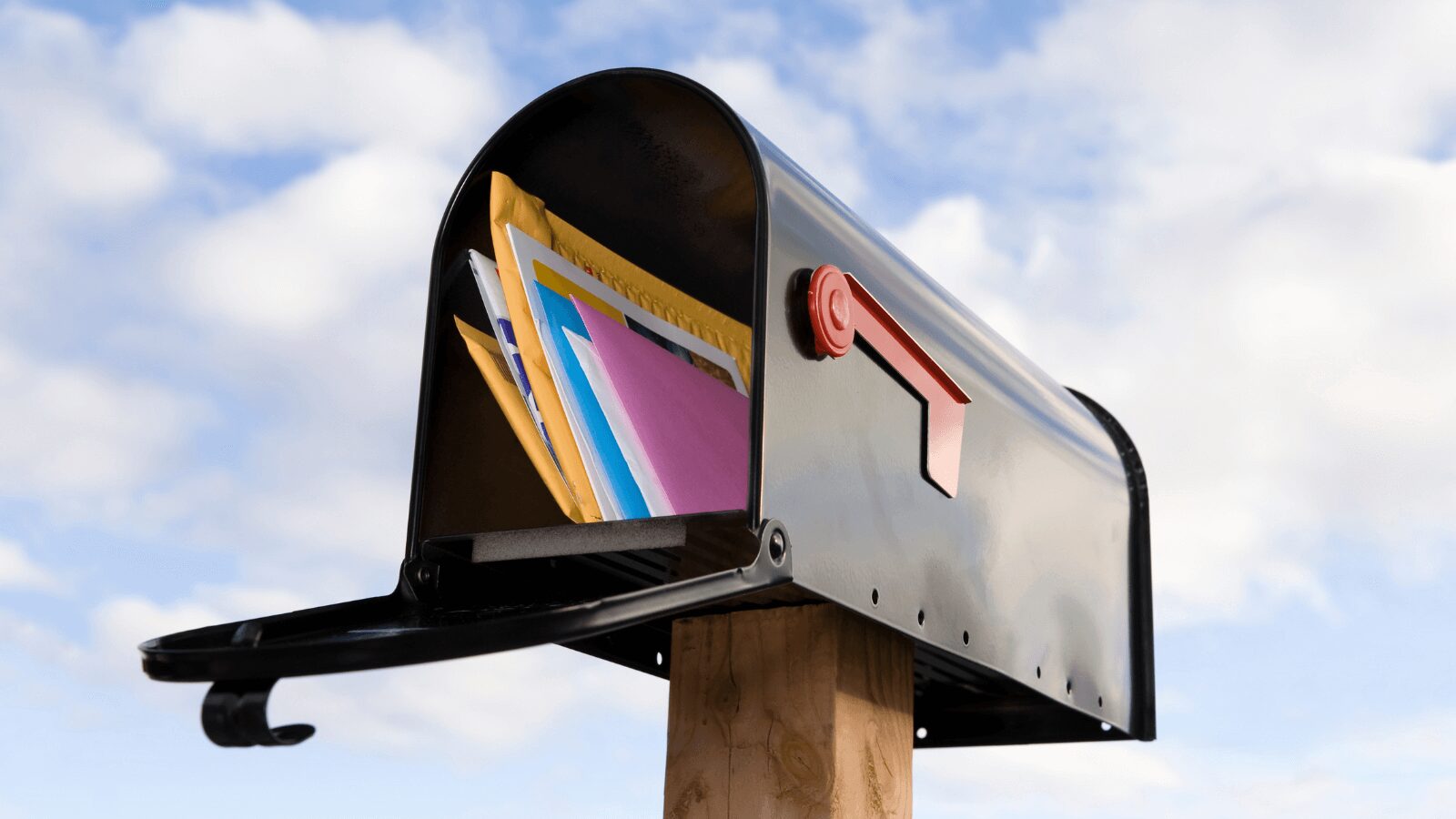
8 Keys To A Successful Direct Mailing Campaign
Defining Clear Objectives
When it comes to launching a successful direct mailing campaign, one of the most critical first steps is defining clear objectives. Without well-defined goals, your campaign is essentially shooting in the dark, which can lead to wasted resources and, ultimately, disappointing results.
Whether you’re aiming to boost brand awareness, generate qualified leads, or drive direct sales, having a clear objective in mind shapes every aspect of your direct mailing campaign—from the messaging to the design and even how you measure success.
Why Clear Objectives Matter
Having clear objectives for your direct mailing campaign is essential because it provides a roadmap for your efforts. Knowing what you want to achieve allows you to tailor your messaging and design to resonate with your target audience.
For instance, if your goal is brand awareness, you might focus on a visually striking mail piece that prominently features your brand’s logo and core values.
On the other hand, if you’re aiming for lead generation, your direct mailing piece might include a strong call-to-action (CTA) encouraging recipients to fill out a form or visit a specific landing page.
Additionally, clear objectives help you determine the success of your campaign. By setting measurable goals, such as increasing your lead generation by 20% or achieving a certain ROI, you can track your progress and make informed decisions on future campaigns.
Common Objectives in Direct Mailing Campaigns
- Brand Awareness: Introduce your brand to a new audience or reinforce your brand’s presence in a specific market. This type of campaign often focuses on creating a strong visual impact with your direct mail piece.
- Lead Generation: Collect contact information or encourage potential customers to take a specific action, such as signing up for a newsletter or requesting a demo. A direct mailing piece aimed at lead generation typically includes a clear and compelling CTA.
- Sales Conversion: Drive direct sales by offering a special promotion or discount. A sales-focused direct mailing campaign might include a limited-time offer that creates a sense of urgency.
- Customer Retention: Strengthen relationships with existing customers by offering loyalty rewards, exclusive discounts, or personalised content. Retention campaigns often use direct mailing to make customers feel valued and appreciated.
In addition, our CTPS Checker ensures your telemarketing efforts comply with regulations, while our Email Marketing Management Services help you manage your campaigns efficiently. And if your data needs a refresh, our Data Cleansing and Data Enrichment services can ensure you’re working with the most accurate and up-to-date information.
By defining clear objectives and aligning them with your direct mailing strategy, you set the stage for a campaign that not only reaches your target audience but also drives the results that matter most to your business.
Understanding Your Target Audience
To truly make the most of your direct mailing campaign, understanding your target audience is not just important—it’s essential. The success of your direct mailing efforts hinges on how well you know the people you’re trying to reach. After all, the more precisely you define your audience, the more tailored and effective your messaging can be.
Why Understanding Your Audience Matters
When you’re planning a direct mailing campaign, it’s not enough to just send out a generic message to a broad group of people. You need to dive deep into who your ideal customers are, what they care about, and how they prefer to be communicated with.
By understanding these details, you can create a direct mail piece that speaks directly to their needs, desires, and pain points. This personalised approach not only increases the likelihood of engagement but also strengthens the overall impact of your campaign.
The Role of Data in Targeting
To effectively understand and define your target audience, you’ll want to consider three main types of data:
- Demographic Data: This includes basic information like age, gender, income level, education, and occupation. Demographics help you determine who your audience is and can guide decisions about the tone, language, and style of your direct mailing.
- Geographic Data: Where your audience lives can play a significant role in your campaign. Geographic data allows you to tailor your direct mailing to people in specific regions, cities, or even neighborhoods. This is particularly useful for local businesses or campaigns that are region-specific.
- Psychographic Data: Perhaps the most nuanced type of data, psychographics dive into your audience’s interests, values, lifestyles, and buying behaviors. This data helps you craft a message that resonates on a deeper, more emotional level, which can be incredibly powerful in direct mailing campaigns.
Tips for Audience Segmentation
Once you’ve gathered and analysed this data, the next step is to segment your audience. Segmenting your audience means dividing them into smaller, more specific groups based on shared characteristics. Here’s how you can do it:
Start with Demographics: Segment your audience by key demographic factors like age, gender, or income level. This will allow you to create more targeted messages for each group.
Layer in Geographic Data: If your business operates in specific locations, consider segmenting by geography to ensure your messaging is relevant to the local audience.
Refine with Psychographics: Use psychographic data to further refine your segments. For example, if you know certain customers value sustainability, you can tailor your messaging to highlight your eco-friendly practices.
Personalise Your Messaging: Once your audience is segmented, personalise the messaging for each group. Use language and offers that speak directly to the needs and desires of each segment. The more tailored your message, the more effective your direct mailing campaign will be.
By taking the time to understand your target audience and segmenting them effectively, you can craft a direct mailing campaign that truly connects with your recipients, driving higher engagement and better results.
The Role of B2B Data in Enhancing Your Direct Mailing Campaign
One of the most critical elements of a successful direct mailing campaign is ensuring that your message reaches the right audience. This is where the importance of high-quality B2B data comes into play. By investing in accurate, up-to-date B2B data, you can significantly improve the targeting, relevance, and effectiveness of your direct mailing efforts.
Why B2B Data Matters
When it comes to direct mailing, the quality of your data directly impacts the success of your campaign. Poor or outdated data can result in your mail reaching the wrong people, leading to wasted resources and lower response rates. On the other hand, high-quality B2B data ensures that your direct mail pieces are delivered to the most relevant and interested recipients, increasing the likelihood of engagement and conversion.
Benefits of Buying B2B Data
Targeted Reach: Purchasing B2B data allows you to target specific industries, company sizes, job roles, and geographical locations. This precision targeting ensures that your direct mailing campaign reaches decision-makers and influencers who are most likely to respond to your offer.
Enhanced Personalisation: With detailed B2B data, you can personalise your direct mail pieces based on the specific needs and pain points of your target audience. Personalised content is far more effective in capturing attention and driving action, making your campaign more impactful.
Improved Response Rates: By targeting the right audience with relevant offers, you can significantly boost the response rates of your direct mailing campaign. High-quality B2B data ensures that your message resonates with recipients, leading to higher engagement and conversion rates.
Compliance and Accuracy: Reputable B2B data providers ensure that their data is compliant with GDPR and other data protection regulations. This not only protects your business from potential legal issues but also ensures that the data you are working with is accurate and up-to-date.
Cost Efficiency: While buying B2B data is an investment, it can save you money in the long run by reducing the number of undeliverable mail pieces and improving the overall ROI of your campaign. Targeting the right audience from the start ensures that your resources are used efficiently and effectively.
How to Choose the Right B2B Data Provider
To fully leverage the benefits of B2B data in your direct mailing campaign, it’s essential to partner with a trusted data provider. Look for a provider that offers:
- High Data Accuracy: Ensure the provider maintains up-to-date records and has a rigorous data verification process.
- Customisation Options: The ability to tailor the data to your specific needs, such as by industry, job role, or location.
- Compliance Assurance: The provider should guarantee that their data is GDPR compliant and adheres to all relevant regulations.
At Results Driven Marketing, we offer a range of B2B Data services tailored to enhance your direct mailing campaigns. Whether you’re looking for targeted mailing lists, telemarketing data, or email marketing solutions, our data is guaranteed to be accurate, compliant, and customised to meet your specific business needs.
Crafting a Compelling Offer
When it comes to direct mailing, the offer is the heart and soul of your campaign. It’s the driving force behind your recipient’s decision to engage with your mail piece and take the desired action. Without a compelling offer, even the most beautifully designed direct mail could fall flat. That’s why crafting an irresistible offer is so crucial to the success of your direct mailing efforts.
The Power of a Strong Offer
A well-crafted offer can make all the difference in whether your direct mailing campaign is successful or not. The offer is what entices your audience to respond—it’s what gives them a reason to act now rather than later. A strong offer provides clear value and makes it easy for the recipient to understand what they stand to gain. It’s important to ensure that your offer is not only appealing but also relevant to your audience’s needs and desires.
Examples of Effective Offers
Here are a few types of offers that have proven to be effective in direct mailing campaigns:
- Discounts: Everyone loves a good deal. Offering a percentage off or a specific amount off a product or service can be a powerful incentive. For example, “Get 20% off your next purchase” or “Save $50 on your first order” can grab attention and drive action.
- Free Trials: If your business offers a service, a free trial is an excellent way to attract new customers. Letting potential clients experience your service at no cost for a limited time can lower the barrier to entry and build trust.
- Exclusive Content: Offering something that’s not available anywhere else can create a sense of exclusivity. For example, providing access to a special report, a members-only webinar, or an exclusive product launch can make your audience feel valued.
Creating Urgency and Value
To maximise the impact of your offer, it’s essential to create a sense of urgency. This can be achieved by setting a deadline for the offer, such as “Offer ends in 7 days” or “Limited time only.” Urgency encourages recipients to act quickly before they miss out.
Another effective strategy is to highlight the value of your offer. Clearly communicate what the recipient stands to gain by taking advantage of the offer. For example, “Save $100 on your annual subscription—act now!” or “Exclusive access to our premium content—yours for free!” By emphasising the value, you make the offer more appealing and difficult to resist.
At Results Driven Marketing, we understand that the right data is crucial for targeting the right audience with your compelling offer. Crafting a compelling offer is an art, and when done right, it can significantly boost the success of your direct mailing campaign. By focusing on value, creating urgency, and tailoring your offer to meet the needs of your audience, you can drive action and achieve your campaign goals.
Designing Eye-Catching Mail Pieces
When it comes to direct mailing, the design of your mail piece plays a pivotal role in capturing attention and conveying your message effectively. A well-designed mail piece not only stands out in a crowded mailbox but also reinforces the key points of your offer and encourages recipients to take action. In short, design is your first—and perhaps best—opportunity to make a strong impression.
The Importance of Design
In a world where mailboxes are often filled with bills and generic ads, your direct mailing piece needs to grab attention immediately. An eye-catching design can be the difference between your mail being noticed or tossed aside. But it’s not just about being visually appealing—your design must also be functional, guiding the recipient’s eyes through the content in a way that’s easy to follow and engaging.
Best Practices for Layout, Color Schemes, Imagery, and Typography
To create a direct mailing piece that not only attracts but also retains attention, consider the following best practices:
- Layout: The layout of your mail piece should be clean and organised. Use white space effectively to avoid clutter and to draw attention to key elements like your headline, offer, and call-to-action (CTA). Break up text with bullet points or numbered lists to make the content easier to digest.
- Color Schemes: Choose a color scheme that aligns with your brand while also standing out. Contrasting colors can highlight important sections of your mail piece, but be careful not to overdo it. Stick to two or three main colors that complement each other and create a cohesive look.
- Imagery: High-quality images can enhance your message and make your mail piece more engaging. Whether it’s product photos, customer testimonials, or illustrations, the imagery should be relevant and support the content. Avoid stock photos that look generic; instead, use images that add real value to your message.
- Typography: The fonts you choose should be easy to read, even at a glance. Use larger, bolder fonts for headlines and offers to ensure they stand out. Keep body text simple and legible, and consider using different font weights or styles to create hierarchy and guide the reader through the content.
Tips for Making Your Mail Piece Stand Out
In a crowded mailbox, your direct mailing piece needs that extra something to get noticed. Here are some tips to help it stand out:
Unique Shapes and Sizes: Consider using non-standard shapes or sizes for your mail piece. A postcard that’s larger or smaller than usual, or a piece with a unique fold, can instantly draw attention.
Textured or Glossy Finishes: Using textured paper or adding a glossy finish can make your mail piece feel more premium, encouraging recipients to take a closer look.
Interactive Elements: Incorporate interactive elements like scratch-offs, pull-tabs, or QR codes that engage the recipient and add an element of fun or surprise.
Personalisation: Personalising your direct mailing piece with the recipient’s name or a tailored message can make it feel more relevant and increase the likelihood of engagement.
At Results Driven Marketing, we understand that the design of your direct mailing piece is just as important as the content. Our B2B Data, Direct Mail Data, and Consumer Data services ensure that your well-designed mail reaches the right audience.
Writing Persuasive Copy
In any direct mailing campaign, the copy you write is just as crucial as the design. While the design grabs attention, it’s the copy that persuades the recipient to take action. The words you choose, the tone you use, and how you present your message can significantly impact the success of your direct mailing efforts. A well-crafted message can turn a casual glance into a meaningful interaction, driving the recipient to follow through on your call-to-action (CTA).
The Role of Copy in Persuasion
The primary role of your copy is to guide the recipient toward taking a specific action—whether that’s making a purchase, signing up for a service, or simply learning more about your business. To do this effectively, your copy needs to be clear, concise, and compelling.
It should resonate with the reader’s emotions, address their needs, and offer a solution to their problems. Every word should serve a purpose, leading the recipient closer to the desired outcome.
Strategies for Writing Compelling Headlines, Body Text, and CTAs
- Headlines: Your headline is the first thing the recipient will see, so it needs to be powerful enough to grab attention immediately. A great headline is clear, benefits-driven, and often creates a sense of urgency. For example, “Unlock 50% Off Today—Limited Time Offer!” tells the reader exactly what they’ll gain and pushes them to act quickly. Make sure your headline is bold and prominent in your direct mailing piece.
- Body Text: The body text is where you can elaborate on your offer and explain why it’s valuable. Keep it straightforward—avoid jargon and get to the point quickly. Use short sentences and paragraphs to maintain readability. You can also incorporate bullet points or numbered lists to break down information into digestible chunks. Remember to focus on the benefits, not just the features, of what you’re offering. For instance, instead of just stating that your product is “durable,” explain how it “lasts longer, saving you money in the long run.”
- Call-to-Action (CTA): Your CTA is the most crucial part of your direct mailing copy—it’s where you ask the recipient to do something specific. Whether it’s “Call Now,” “Visit Our Website,” or “Claim Your Free Sample,” the CTA should be direct, clear, and easy to follow. Use action-oriented language that tells the reader exactly what to do next. Also, consider adding a deadline to create urgency, like “Order within the next 48 hours to get free shipping.”
Personalisation and Tailoring the Message
One of the most effective ways to make your direct mailing copy more persuasive is through personalisation. Addressing the recipient by name and referencing their specific needs or previous interactions with your brand can make your message feel more relevant and tailored to them. Personalisation shows that you understand your audience and are speaking directly to their unique circumstances.
To truly connect with your audience, tailor your message to address their pain points and offer solutions. For example, if you know your audience struggles with time management, your direct mailing piece might highlight how your service saves them time and simplifies their lives. By focusing on the specific challenges your audience faces, you make your offer more appealing and increase the likelihood of a positive response.
At Results Driven Marketing, we provide the tools you need to personalise and tailor your direct mailing campaigns. Our B2B Data, Direct Mail Data, and Consumer Data services allow you to target your audience with precision.
By focusing on persuasive copy that speaks directly to your audience’s needs and desires, you can make your direct mailing campaign not just memorable but also effective in driving action.
Timing and Frequency
In any direct mailing campaign, timing is everything. Even the most compelling offers and beautifully designed mail pieces can fall flat if they land in a recipient’s mailbox at the wrong time. Understanding when to send your direct mail and how often to reach out is crucial to maximising your campaign’s effectiveness without overwhelming your audience.
The Importance of Timing
Timing plays a pivotal role in the success of your direct mailing campaign. The right timing ensures that your mail piece arrives when your recipient is most receptive to your message.
For example, sending a promotion for holiday gifts too early might result in your mail being forgotten, while sending it too late might mean your offer misses the mark. The goal is to reach your audience at the exact moment when they are most likely to take action.
Beyond just the calendar, consider the day of the week and even the time of day when your mail is likely to arrive. A mail piece that arrives on a Friday afternoon, for example, might not get the same attention as one that lands mid-week when people are more engaged with their daily tasks.
Guidelines on Frequency
Determining how often to send direct mail can be a delicate balancing act. Send too frequently, and you risk overwhelming your recipients, leading to disengagement or even annoyance. Send too infrequently, and your audience may forget about your brand or miss out on your offers altogether.
Here are some general guidelines to help you find the right frequency:
- Monthly Mailings: For ongoing communication, such as newsletters or regular promotions, a monthly schedule can keep your brand top-of-mind without overwhelming your audience.
- Quarterly Mailings: If your business operates on a seasonal basis or if you’re promoting major campaigns or product launches, sending mail on a quarterly basis can be effective.
- Event-Driven Mailings: For special events, holidays, or limited-time offers, timing your direct mailing to coincide with these occasions ensures relevance and urgency.
Remember, the key is to be consistent but not overbearing. Monitoring response rates and feedback will help you adjust your frequency to what works best for your specific audience.
Optimal Times for Sending Direct Mail
The optimal timing for sending direct mail can vary based on your industry and target audience. However, there are some general trends that can guide your decision:
- Business-to-Business (B2B): For B2B audiences, sending direct mail mid-week (Tuesday to Thursday) is often ideal, as these days tend to be less hectic, allowing decision-makers more time to review your materials.
- Consumer-Focused Campaigns: For consumer audiences, consider timing your mail to arrive early in the week (Monday or Tuesday), so it’s fresh in their minds as they plan their week. Avoid major holidays when people are less likely to focus on mail.
- Seasonal Campaigns: Tailor your timing to the seasons or specific events. For example, sending a direct mail piece promoting a summer sale should ideally reach recipients in late spring, giving them time to plan their purchases.
By carefully considering the timing and frequency of your direct mailing campaigns, you can ensure that your message is received with interest and enthusiasm, ultimately driving better engagement and higher conversion rates.
Measuring and Optimising Results
After all the effort you’ve put into planning, designing, and executing your direct mailing campaign, the final step is crucial: measuring its success. Tracking and analysing the results of your direct mailing campaign not only shows you what worked and what didn’t but also provides valuable insights for optimising future campaigns. This process is key to ensuring that your direct mailing efforts continue to improve and deliver the best possible return on investment (ROI).
How to Track and Measure Success
To truly understand the effectiveness of your direct mailing campaign, you need to track a few key metrics. These metrics will give you a clear picture of how well your campaign performed and where there’s room for improvement.
- Response Rate: The response rate is one of the most straightforward metrics to measure. It’s the percentage of recipients who took the desired action, such as visiting a website, making a purchase, or returning a reply card. To calculate the response rate, divide the number of responses by the total number of mail pieces sent, then multiply by 100. A higher response rate indicates that your direct mailing resonated well with your audience.
- Conversion Rate: While the response rate measures engagement, the conversion rate goes a step further by tracking the percentage of respondents who completed a specific action, like making a purchase or signing up for a service. This metric is crucial because it directly impacts your bottom line. A strong conversion rate shows that your offer and messaging were compelling enough to drive real results.
- Return on Investment (ROI): ROI is perhaps the most critical metric, as it measures the financial return of your campaign relative to its cost. To calculate ROI, subtract the total campaign cost from the revenue generated, then divide by the total campaign cost, and multiply by 100. A positive ROI means your direct mailing campaign was profitable, while a negative ROI indicates you may need to rethink your strategy.
Tips for Testing and Optimisation
To continuously improve your direct mailing campaigns, it’s essential to test different elements and optimise based on the results. Here are some tips to get started:
- A/B Testing: One of the most effective ways to refine your direct mailing campaigns is through A/B testing. This involves sending two different versions of your mail piece to small segments of your audience, then comparing the results to see which version performs better. You can test various elements, such as headlines, offers, designs, and CTAs, to determine what resonates most with your audience.
- Track and Analyse Data: After your campaign is complete, take the time to review the data thoroughly. Look for patterns and insights that can inform your next campaign. For example, if you notice that a particular demographic responded more favorably, consider tailoring your next campaign more specifically to that group.
- Iterate and Improve: Use the insights gained from your analysis to make informed decisions about your next direct mailing campaign. Whether it’s tweaking your offer, adjusting your timing, or refining your messaging, each campaign should build on the lessons learned from the last.
And also….
At Results Driven Marketing, we provide the tools and data you need to measure and optimise your direct mailing campaigns. By effectively measuring and optimising your direct mailing campaigns, you can ensure that each campaign is more successful than the last, driving better engagement, higher conversion rates, and a stronger ROI.
In summary, mastering the art of direct mailing involves careful attention to seven key areas: defining clear objectives, understanding your target audience, crafting a compelling offer, designing eye-catching mail pieces, writing persuasive copy, timing and frequency, and measuring and optimising results.
Each of these elements plays a crucial role in ensuring that your direct mailing campaign is not only noticed but also drives the desired action from your audience.
For those ready to take their direct mailing campaigns to the next level, Results Driven Marketing is here to help. Our comprehensive services, including B2B Data, Direct Mail Data, Telemarketing Data, and Email Address List Data, provide you with the tools you need to reach the right audience.
We also offer International Email Lists, Consumer Data, and essential services like CTPS Checking, Email Marketing Management, Data Cleansing, and Data Enrichment to ensure your campaigns are as effective as possible.
Direct mailing is a timeless strategy that, when executed thoughtfully, can drive lasting results for your business.
Who are we?
Dedicated to lead generation, Results Driven Marketing provides myriad services SMEs can trust to deliver results.
Our marketing lists are guaranteed accurate to industry high standards, and GDPR compliant and our experience team means that if you are looking to buy data, they make them totally bespoke and highly relevant whether you are looking for email lists, direct mailing lists or telemarketing lists.
Our email marketing software is highly rated. Responder provides the automation tools you need to put your marketing on autopilot.
We also supply email marketing solutions with our email marketing platform.
Call us today on 0191 406 6399 to discuss your specific needs.
Results Driven Marketing
info@rdmarketing.co.uk
0191 406 6399









